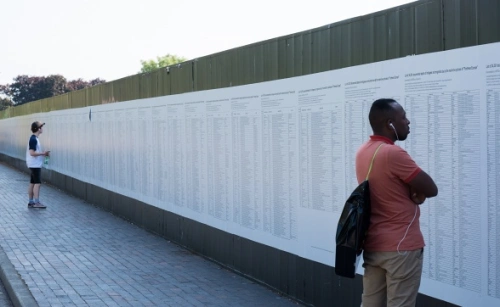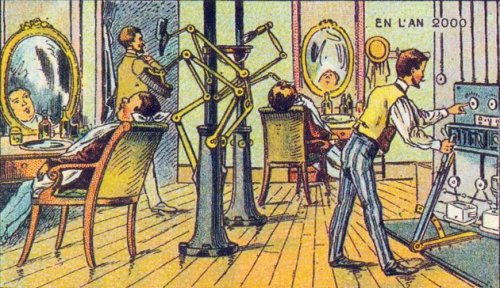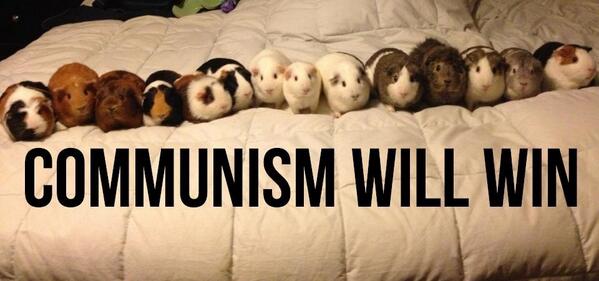This is the final part of a series on Spirituality, Science and Socialism. See the other parts here: 1, 2, 3, 4, 5
CN: racism, fatphobia, queerphobia, rape apologism, trauma
I breathe in, I breathe out.
We are not in control of our bodies. Dragged from our beds by a 9am start, to places we would otherwise never willingly go, to create things we do not own and carry out tasks we have no control over. Or else we struggle by on meagre benefits, subject to surveillance and harassment by the state and marginalisation in the press.
Even outside of the drudgery of work and unemployment, our mental health is at rock bottom. We struggle inside our own bodies, judged as too fat, too thin, too ugly, too vain. That black kid was dangerous, that woman was asking for it, that queer was disgusting. Even that heterosexual white man: he’s not manly enough. Someone else always owns our bodies and has the final say.
I breathe in. I breathe out.
We are embedded in social bodies larger than our own, but they are bodies made alien to us. Pay at the barrier to travel. Pay to sit down, pay to be warm. Pay to exist in your own space, to be kept barely living.
Of course, if you can pay, you can go where you like, take what you want. Take that public space for yourself, knock it down, build some expensive flats on it. The right to the city goes to the highest bidder. Homes become rubble, communities become ghost towns. Our social bodies become corpses.
breathe in. breathe out.
The political body joins us in this spiral of rigid order and total chaos. ‘Take Back Control’ the Brexit campaign said, and it’s no real surprise that it resonated. People are experiencing a real, bodily sense of their worlds being out of control. The loss of the jobs that we are forced to compete for in order to survive, the loss of the social safety nets that supported us, the loss of a sense of any hope for the future, for your friends and family. Loss is not just thought, but felt. Of course, the anti-immigrant sentiment stoked by the campaign is in no way a ‘legitimate concern’ – it is a misdirection, made possible by pre-existing racist tendencies. The actual legitimate source of that pain is capitalism: tearing up what is of no use to it (‘all that is solid melts into air …’), and re-ordering the world to serve profit making. You move to where the jobs are, to where the rent is affordable – across borders if necessary.
This accelerating chaos is fuelling a swing to the other direction, in a desire for control, for the ascent of a leader with easy answers. But handing over power to demagogues like Trump, Farage, or Le Pen is no answer, nor is rigidifying borders or increasing police powers – these are all part of the problem. In order to really ‘take back control’ in any meaningful way, we must restructure every level of society, every institution, every Body, so that we – conscious, feeling humans – are what have control. Not the ‘invisible hand of the market’, not a bunch of warmongering politicians at the helm of the state, but all of us, in control of our bodies and with deep, meaningful input into how they are run.
a breath in
In the midst of all this, can we really ask for more acceleration? Not if that means to accelerate the processes which are creating this misery. But underlying it all, often hidden beneath the barrage of violence, are growing potentials and tendencies, new tools of liberation. It is about finding those points of harmony and novelty, and identifying how to accelerate their reproduction, without causing harm elsewhere. In all the expanding circles of life – ourselves, our communities, organisations, cities, nationstates, the earth – we find outselves in bodies beyond our control. Embodied accelerationism means finding ways to taking control of those bodies. All of them.
Each of us has access right now to a body that we can change, one which is our home – the human body. In order to be able to transform the wider scales of social, cultural, political and economic bodies, we must regain control of ourselves. We must look inside and restructure ourselves, to strengthen our ability to act in the world, individually and collectively. Healing from traumas. Building new ways of understanding and acting in the world. Taming our destructive behaviours, and unlearning internalised oppressions and privileges. Smashing head-on those parts of us that refuse to change, that repeat our pain and the pain we cause in others. Where chaos reigns, we bring order; where rigidity reigns, we embrace chaos.
and out.
Secular mindfulness …
Although it is by no means the only way we could engage in bodily change, I am going to focus on Mindfulness – for reasons which should become clear. Mindfulness refers to a set of secular practices derived from the Buddhist tradition, and also to a goal: an increase in the intensity of your awareness of the present at all times. This awareness can help people to both manage their emotions and to analyse and alter their unconscious reactions. It means taking back control over your body. This is why psychiatrist Bessel van der Kolk argues that mindfulness and similar other embodied practices have such powerful (and empirically founded) therapeutic effects on sufferers of trauma and other mental health issues.
The vividness described by mindfulness practitioners is not our normal experience of consciousness. Through mindfuless, you come to an awareness that:
“the mind is seized constantly by thoughts, feelings, inner conversations, daydreams, fantasies, sleepiness, opinions, theories, judgments about thoughts and feelings, judgments about judgments – a never-ending torrent of disconnected mental events that the meditators do not even realize are occurring except at those brief instants when they remember what they are doing”
(from Varela, Thompson, Rosch – the Embodied Mind: cognitive science and human experience)
By drawing attention to the ongoing processes of the mind, you gain an appreciation for the constant flows and interconnection within us and around us. This ties neatly into the metaphysical framework used in this series, as flow and interconnection are its core elements (as they are is in the Marxism, complexity science and process theology I’ve drawn from).
… and its discontents
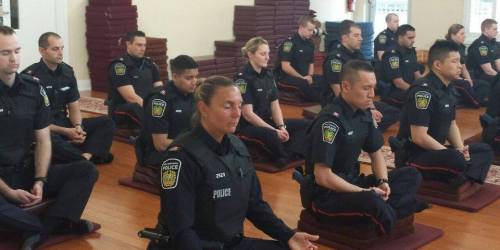
However mentally resilient you may be, you still have to pay rent, you still have to find work, or navigate the minefield of state benefits. You will still experience racism, sexism, transphobia, ableism. Listening to the breath is not going to stop capitalism, even if helps you to cope better within it. Unlike Buddhist forms of mindfulness, there is usually no explicit ethic attached to these secular western practices. The focus instead lies almost entirely on the individual. What could and should be a tool of liberation is instead used to further integrate the human body into neoliberal capitalism. Survival strategies are commodified, the real source of our pain remains hidden, and it ultimately risks defusing vital revolutionary anger. As cognitive scientist and philosopher Evan Thompson puts it, “the modern fetishising of Buddhism and yoga, and Asian religions in general, fits perfectly into a consumerist corporate culture that needs to pacify itself from the endless stress of global capitalism.”
To enable mindfulness to fulfill its liberatory and revolutionary potential, it must be brought into contact with a more complex and critical understanding of the world, along with an appreciation for the power of collective action. By integrating mindfulness practice into the ’embodied accelerationist’ ethics proposed in the previous post, individual liberation changes from an end goal, to an initial step in achieving global liberation. It is neither individualist nor rigidly collectivist: all levels of the body are valued. I should make it clear that the mindfuless I’m referring to from here onwards is the Western secular form, in line with the attempt in this series to remain accessible to atheists and religious people alike.
From the solid grounding of the human body, we expand outwards into the world. From here we must not only analyse but also feel the disharmonies around us, that we produce, including those that do not directly affect us, and even those that involve non-human actors. We feel ourselves and the quiet room around us as one body. We feel our relationship with a person as one body. We feel the buzz of a crowd as one body. Our organisations, our cities, our earth: one body. But we don’t simply marvel at these radical interconnections – we use these perspectives to seek out disharmony, analyse where it comes from (through our intersectional, anti-capitalist framework) and use that to drive change on every level. This practice is what I will call Radical Mindfulness.
The organisation of the unconscious mind
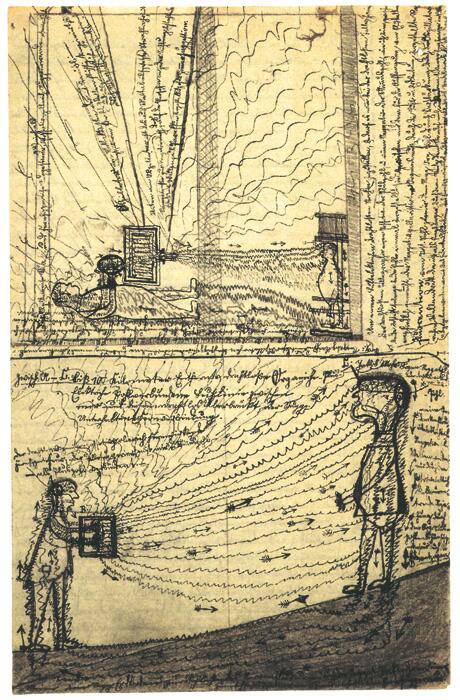
What is it that blocks us from feeling the interconnections between our bodies?
Imagine this scene. You are walking down the street, and you encounter a person sitting on the wet pavement in dirty clothes, holding a cardboard sign. In this moment – in every moment – you are taking in information, triggering pre-formed categories in your mind (e.g. ‘homeless person’) and then positioning yourself in relation to this. In other words, as we’ve seen in previous posts, Bodies are created through present flows, activating past structures, leading to future powers. This is as true for the flower or the car as it is for the production of your unconscious mind: the ground of internalised oppressions and privileges. And as with all organisation of Life, this occurs at varying degrees of rigidity.
- Present flow: do we acknowledge that the person before us is complex and filled with history and interconnection, or do we cut these off, and judge them entirely based on the simple image we see?
- Past structure: do we allow flexibility of these categories, within and between them? Or do we force things into rigid, unmoveable binaries?
- Future power: do we maintain a flexibility of our internal sense of self, and the connections we can make with other bodies? Or do we create a hard segregation between our self and others, an Us vs a Them?
In our scene, these translate to:
Do you see a homeless person, and only a homeless person? Or do you see a person who must have experienced things to arrive in that place, who has a unique character, has a history and family and friends, has talents, dreams, desires and pains?
If you learn that this homeless person doesn’t sleep on the street but instead sleeps on a friend’s sofa, do you immediately reject their claims, reject them as homeless? Or do you re-evaluate your category, understanding them as always flexible and imperfect?
And whether or not you feel positively or negatively towards them, do you disconnect your sense of self from them – do you create an Us and Them? Or do you include them in Us? This distinction is reflected in the difference between charity and solidarity. The former requires you to remain on a pedestal above those you help, segregated from them, whereas solidarity is an act of coming together, of creating or re-emphasising your connections.
These are all unconscious processes, happening without our say-so. But mindfulness provides us with a space in which to use our conscious mind to examine and mold those unconscious processes. We can re-emphasise the flow and interconnection of bodies, challenge the boundaries of our categories, and uncover multiple overlapping identities within ourselves.
Left unchecked however, these rigidities will manifesting as hatred or fear of the other, complete self-assurance in the correctness of your beliefs and actions, an ignorance of context and history. The rigid mind loves borders, leaders and the violence used to preserve them. The poor deserve their fate. Transgender and non-binary people do not exist. You’re either a criminal or a law abiding citizen. ‘All Muslims are terrorists’. Identifying where our unconscious is producing rigidities is therefore an important part of unlearning our reproduction of systems of domination, whether it’s white supremacy or the normalisation of capitalism.
Softening rigidities in our own minds can help us on an individual level, both to cope with the struggles we are faced with and to minimise the pain we cause to others. But it does little in itself to help dismantle the systems of oppression that led to those experiences in the first place. For this we have to look at what produces those states, and that means looking to wider scale social bodies.
Social reproduction of rigid relations
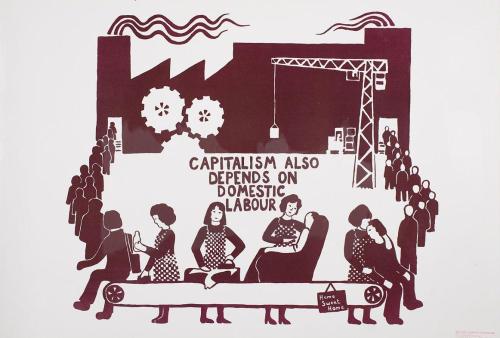
All of the institutions of the modern capitalist nation state resonate together to help produce this rigid unconscious. This is one way in which capitalism perpetuates all forms of oppression – not just individually benefitting from and supporting white supremacy, patriarchy, ableism and so on as distinct systems, but actually molding the human subject in such a way as to make these seem utterly normal. Getting past our current capitalist stage is not simply a case of changing minds individually, but of collectively changing the whole structure of society on all scales, and how it influences us to think.
As we’ve also mentioned in past posts, when a body’s structure is activated it is also altered: the past of the body becoming crystallised in its structure. Repetition of a certain way of interacting between bodies will over time influence their mutual development. The person of colour adapts to survive in a white supremacist society, and the white person adapts to take their privilege for granted. The social bodies of which we are part are themselves self-reproducing and adaptive – what we have called Minds. They therefore display similar processes as in the production of the human unconscious:
(The following examples are all ideal forms, and any real world example is likely to conform to some parts but not others)
Nuclear Family
- rigid flow: all members are seen as simply their role in the family, rather than being complex unique beings of their own right;
- rigid category: mother, father, daughter, son, each coming with their own rights and responsibilities;
- rigid self: family is conceived as a whole, cut off from others – we are a family unit, and they are not us.
When are you getting married? When are you having kids?’ people ask – not ‘do you want to?’ Your individual characteristics are wiped away. You are presumed to be heterosexual and monogamous. You are a housewife who cleans and cooks and looks after the kids. You are father who brings home an income and disciplines your children. You are a son or a daughter, you are obedient and you will pass through the conveyor belt of school, university, work and marriage. Outsiders are treated with suspicion, and within the family upholding its ‘honour’ becomes justification for physical and emotional violence.
School
- rigid flow: to the school you are reduced to ‘an admission’, ‘a fee’, or ‘a score’ equivalent to any other, rather than being a complex and unique being
- rigid category: teacher, student, parent, headmaster, each coming with their own rights and responsibilities.
- rigid self: this school is conceived as a whole is cut off from others – we are a unit, and outsiders are not Us. ‘You’re in school now, not at home.’
The whole of you as a person is replaced with numbers. You are funnelled through each class and must follow a rigid set of rules around behaviour, dress, hairstyle, orderliness of bodies, topics, language, all of which you have no input, and no democratic power. They are the teacher, you are the student, and that is that. It is worth noting of course that the rigid categories imposed are also based on the dominant privileged identity; hence dialects or hairstyles common with children of colour being deemed unacceptable.
Work
- rigid flow: people are made into their job role and nothing else
- rigid category: worker, boss, customer, each with their own rights and responsibilities
- rigid self: workplace is conceived as a whole, cut off from others: you compete with other businesses, you compete even with other departments.
The whole of your personality is ignored for only that tiny aspect that the employer can extract a profit from. Everything you do must be justified within the remit of your role or you are punished – no Facebook, no chatting, no toilet breaks, don’t arrive a second past 9am or leave a second before 5. You are the worker, they are the boss. You own nothing you make or do, and you control nothing in your environment without their say.
These are only a handful of examples, and by no means the only ones. What each of these does is not simply create a sense of rigidity within that particular sphere (in the family, at school, at work) – but rather molds the whole subject so that they begin to reproduce those relations everywhere. Our tendency is then to assume disconnection, binary categorisation, and segregation. We are cut off from each other. We do not see those who produce the world for us. We do not see ourselves reproducing others’ oppression. We do not see how our consumption relies on others’ poverty. We do not see our pollution reaching oceans, or the journey of our waste to be dumped in enormous landfills.
How then do we reshape these institutions, to break the cycles that reproduce systems of domination, in order to make revolution possible? It’s too easy to see the problems as transcendent: capitalism bearing down on us, patriarchy bearing down on us, the state bearing down on us. But we have to reckon with the ways in which these are reproduced within us, through our everyday thought and action (and inaction). It’s not just a case of ending capitalism as though there were some off switch located in a government office somewhere. Nor is it possible to end it simply through a top-down state-led approach of reform or revolution. It requires a transformation of consciousness, from the bottom up, through all bodies at all scales.
Embodied accelerationism as practice
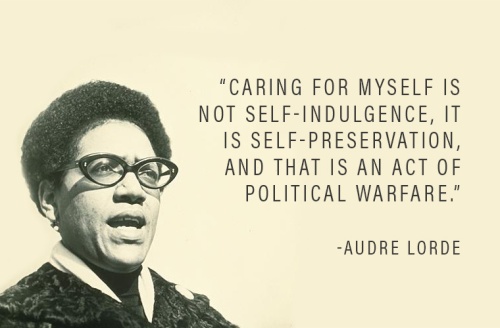
Embodied accelerationism means taking control of our bodies. All of them. Where we identify harmful rigidity or chaos, we must intervene. We must restructure the bodies that we are part of, and that reach out to affect us. We analyse the flows that are in motion, identify disharmonies and where they are produced, and then inject either chaos or order to rebalance them. What an injection of chaos or order will mean in a particular body at a particular scale cannot be determined in the abstract terms we’re using here. It can only be judged by knowledge of that body, of the context it sits in, and through experimentation.
This ‘acceleration’ must not be taken to mean the amplification of everything that exists. Nor even does it necessarily have the sense of accelerating technology and automation to lead us beyond capitalism (the thrust of the original Accelerationist Manifesto). The desired acceleration is instead of what we identified in the previous post, of the tendency towards harmony and novelty in all bodies. Accelerating growth in a specific body is only one tool towards this end. That end will be achieved through a combination of interventions:
– Accelerate self-reproduction of those elements already producing harmony and novelty: Healing
– Accelerate replication of a body, to spread into or create new bodies: Building
– Decelerate production of those elements that produce disharmony: Taming
– Accelerate collapse of those bodies producing disharmony which prove incapable of change: Smashing
I have previously set these out as sub-strategies at the level of whole social movements in an article called Shock Doctrine of the Left. Here however, these logics are relations between any equivalent bodies, on any scale. Between two organisations, two humans, even two parts of yourself. Certain actions we take might not fall neatly into a single category, but they remain useful as a tool for thought, to understand the different angles we can attack a problem.

Healing is support for processes which reproduce bodies. We look inside a body that we are satisfied with and wish to preserve, uncover what is producing that body, and support it. Many of these processes will fall under ‘social reproduction’, usually including things like health and social care, housework, emotional labour. But it should also include processes of reproduction of any body, both individual (self-care), organisational (admin, training), or urban (transportation, communication infrastructure, waste disposal). None of these actions could be said to be revolutionary of themselves, but in a particular context, through their role of reproducing a revolutionary body, they certainly can be.
Healing strategy therefore provides the basis of revolutionary action. On the individual and interpersonal level, it enables a wide variety of people to be supported not only in surviving capitalism, but also to be actively involved in revolutionary movement. Without it, at best a movement will be lopsided, led by those least affected and most privileged (usually white, middle class, heterosexual men). On a wider social scale, it provides the means which keep that movement resilient. Healing is far from sufficient, but it is the necessary grounding element – if all else fails, Healing must endure, in order that a movement survives. It has been said that ‘care is revolutionary’; this applies to all types and scales of body.
(This particular aspect of Radical Mindfulness has elsewhere been referred to as The Care Ethic. A full comparison will have to wait for another time, but in short, for me – I can’t speak for others who’ve used the term – the Care Ethic concept is the same idea of taking reproductive processes as primary, reworded in order to provide a direct challenge to the dominance of the work ethic.)
Building is the production of new harmonious bodies, and the expansion of those that exist. So whilst Healing intensifies existing processes between two bodies, Building extends them into new bodies. We create new alliances, expand friendship networks, start new organisations, create new mental models (as I’ve attempted to do in this series) or utopian visions of the future. The purpose of this is twofold – in some cases, a new body created will succeed simply through evolutionary pressures. In other cases, the growth of our ideas will be stunted by the forces acting against us, and a chaotic event will be necessary to break through this. If our alternatives are already in place when chaos breaks out, a social body is able to re-order around those models. If we wait till after the revolution, we’ve missed the boat. Hence the frequency with which workers councils have played a role in revolutionary movements, from the Soviets of the Russian Revolution to the communes in contemporary Venezuela. You start building the future social bodies today, before the revolutionary moment.
Taming is where we identify a body which is actively producing disharmony, and seek to decelerate those processes. If as a man I am repeatedly experiencing misogynistic thoughts, despite my genuine support for feminist ideals, then clearly my Building of alternative mental models hasn’t been sufficient. I have to actually identify what within or around me is reproducing this behaviour and seek to reduce its impact. On wider scales: we identify problems in our relationships, clarify our boundaries and responsibilities, be open and honest about our problems. We identify the problems in our organisations, alter their structures and processes. At a wider level, problems may be tackled through changes in laws and regulations. Broadly speaking, these are reforms. Reforms of the state body, but also reforms of the human body.
After Healing our bodies, Building their futures, and Taming our difficulties, some disharmony-producing bodies will remain. A body that has failed these strategies is then a canditate for Smashing. This is a massive injection of chaos, produced by blocking flows into, out of and within a body, in order to prevent its reproduction. This can create massive, unpredictable disturbance, which is why it should ideally only be attempted after all else has failed. It should also escalate where possible, so we maintain control: beginning with smashing bodies of smaller scale and lower complexity. Ideally, blockades come before property damage come before physical violence towards a person – though of course, ideal circumstances don’t always present themselves. Smashing on a social level will generally mean breaking apart social networks, rather than the harming of individual bodies – though as stated in the previous post, punching Nazis is perfectly consistent with this framework.
(There’s not enough room here to go in detail into the ethics of violence that this system would seem to lead to, but the importance of consciousness set out in the previous post should give us pause before contemplating things like killing, at least in anything other than immediate self defense. You are afterall not just destroying a body, but a body that knows it is being destroyed)
Combined, these sub-strategies add up to something which doesn’t fall neatly within the still prevalent reform/revolution binary – as it shouldn’t, given what was said above about destroying rigid binaries. What it means is instead designing a strategy from the ground up, based on conditions that exist at that moment in time, taking into account everything we know about the dynamics of complex systems, and not simply relying on 100 year old revolutionary theory and failed organisational models.
Conclusion – where to now?
This series of articles has hopefully outlined a useful framework for bringing the body into a more central role in socialist theory and practice – or at least given you something to think about. This does not have to be the only way. In fact, I encourage anyone and everyone to take these ideas, make them your own, and act upon their own new synthesis. This series only scratches the surface of what a cohesive, spiritually-literate socialist practice might look like. It will need to be spelled out in more practical steps in posts to follow – but from here on this becomes a collective matter, rather than one I can do on my own. True to the practice set out here, the next step must involve a lot more than simply abstract debates and writing into the ether. The plan is to organise around these ideas. I already have a number of trusted people ready to begin an initial research group, and there are suggestions for future think tanks and media centres, revolutionary community organisations and educational programs. If you want to get involved, get in touch.
As you might have gathered from the introductory post, writing all this was part of my own healing process. Hopefully I have tamed some of the resistance a few readers may have had to questions of spirituality. Now we must build, and build and build and build, to prepare for the cascades of chaos to come, and be ready to smash back.
References
Barash – Not Just the Lotus Blossom: Buddhism and ecology partner up
Berila – Integrating Mindfulness into Anti-Oppression Pedagogy
Beth Berila – Towards and Embodied Social Justice
Buchanan – Deleuze and Guattari’s Anti-Oedipus: a reader’s guide
Culadasa – The Mind Illuminated: meditation integrating Buddhist wisdom and brain science
Deleuze and Guattari – Anti-Oedipus
Deleuze and Guattari – A Thousand Plateaus
Durand – Organisations, Strategy and Society: the orgology of disorganised worlds
Fisher – Capitalist Realism
Fisher – All of this is Temporary, on capitalism and consciousness
Fisher – Terminator vs Avatar (in Accelerate Reader)
Fraser – Capitalism’s Crisis of Care
Holland – Deleuze and Guattari’s Anti-Oedipus: introduction to schizoanalysis
Massumi – A User’s Guide to Capitalism and Schizophrenia
Noys – Communization and its Discontents: contestation, critique and contemporary struggles
Reed – Seven Prescriptions for Accelerationism (in Accelerate Reader)
Rifkin – The Empathic Civilisation
Roberts – Capitalism, psychiatry and schizophrenia: a critical intro to Deleuze and Guattari’s Anti-Oedipus
Simpkins and Simpkins – The Neuroscience of Dao
Syedullah, Owens, Williams – Radical Dharma: Talking Race, Love, and Liberation
Thompson – Mind in Life: biology, phenomenology and the sciences of mind
van der Kolk – [book] The Body Keeps the Score: mind, brain and body in the transformation of trauma
van der Kolk – The Body Keeps the Score: mind, brain and body in the transformation of trauma
Varela – Ethical Know-How: action, wisdom and cognition
Varela, Thompson, Rosch – the Embodied Mind: cognitive science and human experience
Waistell – Marx and Buddha: a Buddhist communist manifesto
Yellow Bird – Neurodecolonization https://vimeo.com/86995336

